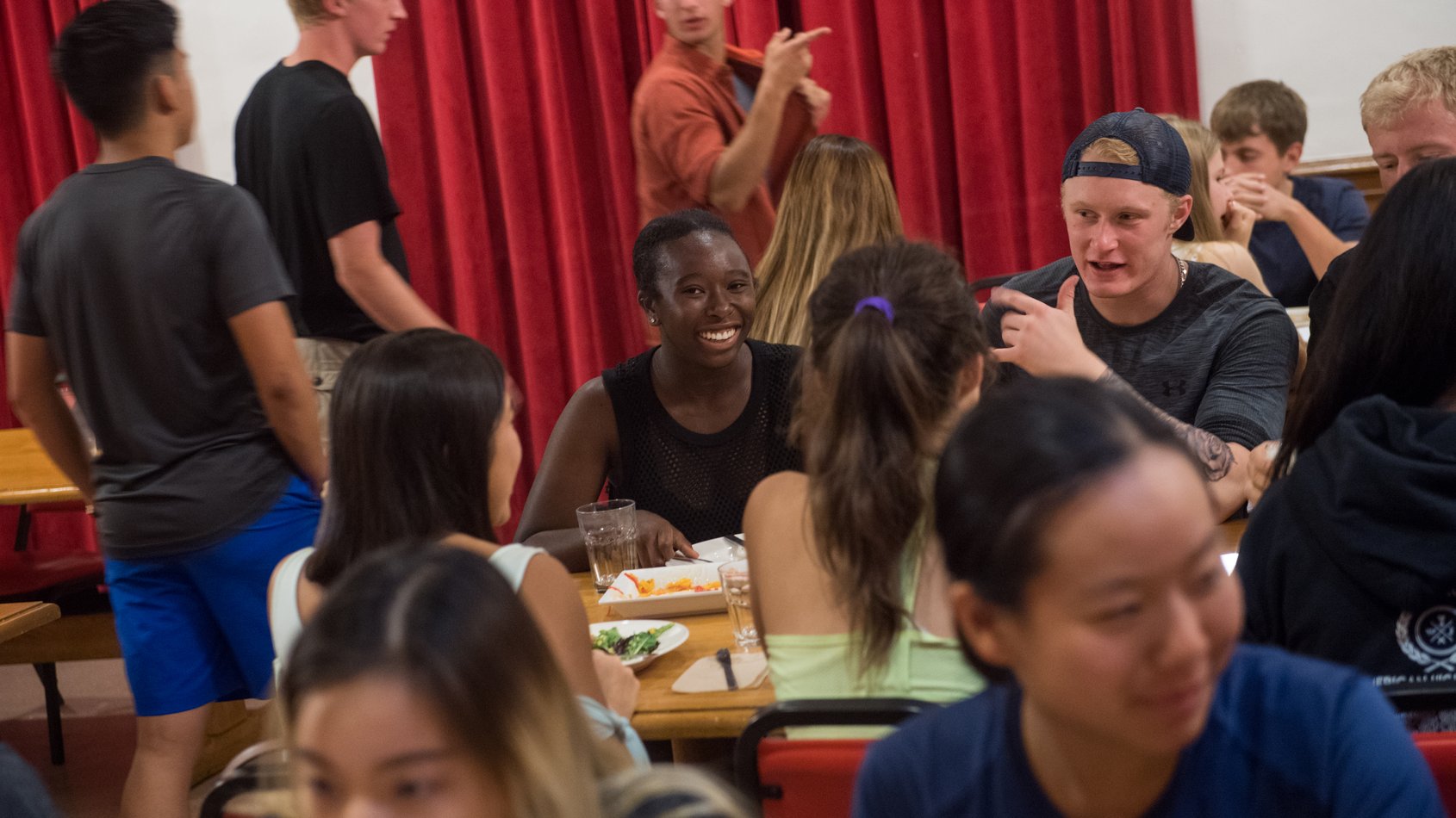Co-Curricular Experience
‘It’s kind of like Hogwarts’

Ask any past and current Caltech undergraduate about their experience on campus and one thing will be nearly universal: affinity for their house.
“Houses at Caltech are kind of a cultural landmark of being an undergraduate here,” says Cellie Cap, a second-year student studying astrophysics. “We have eight houses and it's kind of like a ‘Harry Potter’ house. Each house has its own personality, vibe, and things that they do.”
Students call it a “mix between a fraternity or sorority and a dorm,” but the reality is there is nothing like the Caltech house system. The “Hogwarts” nature of the houses means students get to select where they live based on each house’s unique characteristics. Houses become one of the primary places where students find belonging, friendship, and academic and emotional support.
The support and connectivity provided by the House system are critical to the Caltech student experience. That’s why the Caltech Initiative for Students has a goal of raising $35 million to support co-curricular experiences, including residential programs. It also aims to raise $30 million to expand health and wellness offerings that are integrated into students’ everyday lives, like the peer advocate program.
Each house community is led by upper-class students who serve as resident advisors, peer advocates, and health advocates–providing guidance to students.
Tyler Colenbrander, a senior majoring in electrical engineering, serves as a peer advocate for his house. Peer advocates are available to discuss personal and academic issues and help create connections with the counseling center staff.
“Peer advocates help integrate the new students into the whole community and be there as a person that new students can just go up to,” he says. “Last year, I had four new freshmen who moved into my dorm. And so I would just check on them periodically. It’s been really great because I've helped people with things that are academic, like questions about classes, but also personal and social.”
While the support given by resident advisors and peer advocates is essential, Cap says the support system that students create within their house goes much deeper than that.
“It’s the friends you make and the upperclassmen that you live amongst you. It’s the people you need the most during your undergraduate life,” she says.
With the vast majority of undergraduates living on campus, and students of all years, majors, and backgrounds living together, the house system gives first- and second-year students the opportunity to find mentorship from upperclassmen.
“Across my hall is a senior in math or down the hall for me is another junior who is studying material science. So it's really easy to knock on their door and say, ‘hey, I have a problem with this class or this problem set. Can you help me?’” Cap says.
House activities–from the weekday dinners that follow each house’s special rules and traditions, to inter-house parties that allow residents to demonstrate their special brand of creativity–also play a major role in bonding students and creating community.
“House dinners are chaotic. I think that would probably be the universal experience, but in a good way,” says Leah Griffith, a fourth-year student studying computer science and business. “We have a bell that gets rung in the beginning and announcements at the end. We throw napkins and play games. I really just love the communal feel of house dinners.”
Griffith selected her house during rotation because she felt it was the community she was looking for.
“I wanted to feel supported. I wanted to be surrounded by people who were ambitious and would help me. And I found that here,” she says.
This archived content may contain outdated information or references that may not reflect current practices or programs.